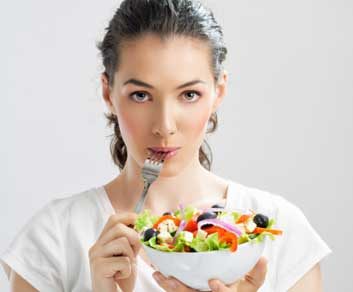
Inflammation fighters
I first learned about the connection between food and inflammation a decade ago, when I saw a dermatologist about my acne. This specialist was way ahead of his time: Instead of prescribing medication, he asked me what I was eating. He explained that angry, red pimples are a manifestation of inflammation in the body, and that eating certain foods makes acne worse or better. When I took his advice and changed my diet, my skin changed dramatically. (Of course, there are different causes for acne so food isn’t always the cure, but as a rule an anti-inflammatory diet should improve redness, inflammation and the overall look of your skin.) Intrigued, I began to study the emerging research about inflammation throughout the body, and the power of anti-inflammatory foods.
Inflammation is normally the body’s protective response to injury or destruction of tissue. Acute inflammation is adaptive and serves a purpose. For example, when you cut your finger, the area will become inflamed (red, painful and warm) as blood and specialized cells rush in to protect, repair and heal the injury.
In contrast, chronic low-grade inflammation causes long-term damage to tissues, and is believed to be a major contributor to most chronic illnesses. This is the type we want to avoid. People with diabetes, heart disease, arthritis, autoimmune diseases or even cancer have been found in studies to have higher levels of “inflammatory markers” in their blood. Inflammation also leads to more rapid aging.
Sometimes chronic inflammation is obvious, as with a painful arthritic knee, but it’s typically much more subtle. Inflammation that contributes to heart disease happens at a microscopic level in your arteries. You’ll never notice it or feel it until the condition is severely advanced.
We now understand the various triggers that cause chronic inflammation-including stress, depression, smoking and poor sleep-and the natural ways to counteract them. You probably heard long ago that eating a Mediterranean-style diet reduces the risk of heart disease. What you might not know is that it’s also a textbook “anti-inflammatory diet” packed with whole foods and low in refined sugars, refined flours, trans fats and red meat-all of which are believed to lead to inflammation.
Here are some of the power foods that reduce inflammation, protect you from disease and slow the aging process:
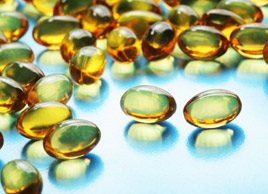
1. Fatty fish
The omega-3 fatty acids (eicosapentaenoic acid [EPA] and docosahexaenoic acid [DHA]) in fatty fish such as mackerel, salmon, trout and sardines are powerfully anti-inflammatory. In addition to eating fish a couple of times a week, I recommend taking a high-quality fish oil supplement daily. I eat wild salmon several times a week and also take a daily (wild) fish oil supplement.
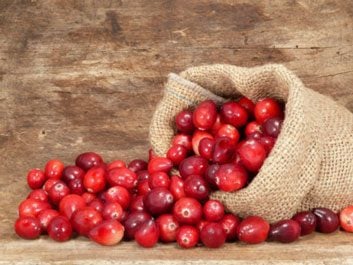
2. Fruit and vegetables
The flavonoid and carotenoid antioxidants in richly coloured produce-such as deep red berries, broccoli, sweet potatoes, and red and orange peppers-are potent anti-inflammatories. Eat at least five servings a day and go for a wide range of colours. I have berries in my freezer year-round and eat them daily, and I usually crunch on raw vegetables with my lunch.
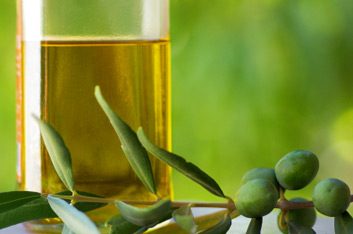
3. Extra virgin olive oil
Rich in antioxidants, this is one of the cornerstones of the Mediterranean diet. I use it in salads, in cooking and for dipping whole-grain breads. Don’t go overboard, though; one tablespoon (15 mL) has 119 calories and 14 grams of fat!
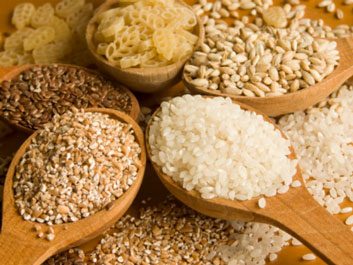
4. High-fibre whole grains
Refined white flours convert quickly into sugar in your blood, which is inflammatory. Fibre, in contrast, is anti-inflammatory and digests much more slowly, avoiding damaging spikes in sugar. (Here’s a simple tool that I was taught by world-renowned Dr. Andrew Weil: If you can easily squish a piece of bread-crusts removed- into a pea-size ball, it’s not high fibre.) I look for four to six grams of fibre content on the label before buying a “whole grain” product.
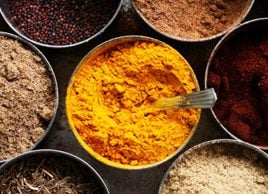
5. Turmeric
This bright yellow spice found in Indian curries is a superstar. Its active ingredient, curcumin, comes in supplement form and has been shown to be as potent for easing aches and pains as OTC painkillers such as ibuprofen. I love turmeric-rich curries and keep a bottle of the spice in my cupboard.
The scientific support for whole foods just keeps growing. The better you eat, the better you’ll look and feel, and the more likely you’ll enjoy a healthy, inflammation-free life.
Related:
• 7 ways to get your daily fruits and veggies
• 4 healthy superfood pairs
• 4 ways yoga is good for your heart
